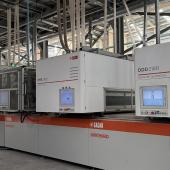ITC: new developments in kiln emission abatement
The Instituto de Tecnología Cerámica has launched a pilot project to develop technologies for reducing emissions of acid pollutants from ceramic kilns.
The Instituto de Tecnología Cerámica (Institute for Ceramic Technology, ITC) in Castellón has undertaken a major experimental project at the Keraben ceramic factory in Nules, where it has started up a pilot plant for studying new solutions for reducing emissions from ceramic kilns, with a special focus on acid pollutants. The pilot plant will serve to conduct measurement campaigns through to the end of the summer using latest-generation monitoring systems capable of providing real-time information on the emissions of the industrial plant.
The ITC initiative is part of the DREAM (Design for Resource and Energy efficiency in ceramic kilns) project financed by the European Union’s Horizon 2020 programme. The aim of the DREAM project is to develop innovative technologies for both traditional and new-generation kilns capable of increasing the sustainability of ceramic production processes by reducing energy consumption, emissions and production costs while improving product quality.
Eleven partners are involved in the DREAM project: along with the above-mentioned ITC-AICE, the team includes the project leader Sacmi supported by CRIT, an Italian company involved in the development of research projects, tile manufacturers Keraben and Mirage, the German refractory producer Rath supported by Forschungsgemeinschaft Feurest, the UK heat exchanger specialist Econotherm, Synesis, a company specialising in manufacturing process innovation, the University of Modena-Reggio Emilia and Brunel University London.
Did you find this article useful?
Join the CWW community to receive the most important news from the global ceramic industry every two weeks




















